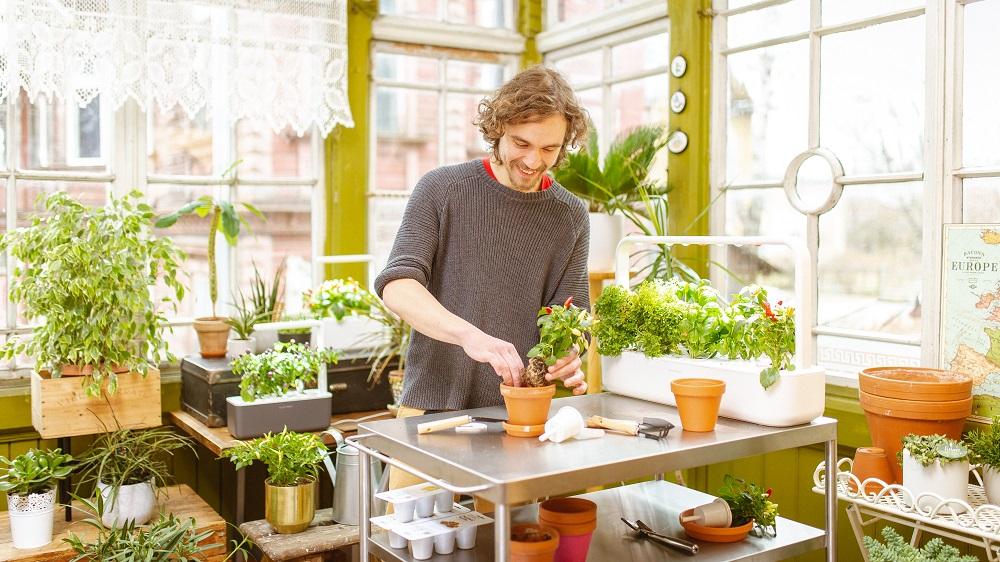News
Your Guide to Repotting Click & Grow Plants

We’re sometimes asked whether it’s possible to repot your Click & Grow plants. The answer is, yes, you certainly can. If repotting is something you’re considering, here’s what you need to know:
Common reasons for repotting
To allow your plants to grow wild
Nature can be unpredictable and sometimes plants grow taller and wilder than you expect. If this is the case, you can transplant them to a bigger pot and care for them as you would with a regular potted plant.
To make room for new plants
With over 60 varieties of plants to choose from, there’s always something different to grow. By repotting, you can extend the life of your existing plants while growing something new.
When to repot
Plants growing in a smart garden generally have a life cycle that lasts between 2 - 6 months. If you wish to repot your plants, it’s important to do so before their life cycle ends. You can check each plant’s ‘lasts up to’ date in our plant catalog. Simply click on the plant you want to learn about and then select the ‘plant care’ tab to view this.
You can also get info on your plant from the Click & Grow mobile app. Once you’ve registered your smart garden and plant on the app, you’ll receive helpful tips at each stage of your plant’s life cycle.
What type of soil to use for repotting
In your new plant pot you can use universal soil that’s enriched with nutrients. The optimal soil pH for most of the plants is 6-7. Alternatively, you could use specific soils for your plant (eg. herb soil for herbs, tomato soil for tomatoes).
How to repot
Step 1: Remove the plant from the cup and carefully loosen the rootbound to stimulate root growth.
Step 2: Cut back approximately ⅓ of your plant. Cutting back your plant leaves also helps to reduce evaporation from the leaves until the plant is rooted. Also, remove any fruits or flowers. By doing that, you’re helping it to root faster as the plant won’t need to put energy into growing fruits.
Step 3: Plant it in the new pot at the same depth it was grown earlier.
Step 4: Gently pat down the soil and water it. This helps the roots make better contact with the soil.
For a visual reference, check out this video guide on how to repot petunia. The same process applies to other Click & Grow plant pods you may wish to repot.
Pro tips
- Make sure you water the plant pot enough during the first few weeks - the soil should be moist but not too wet. The water helps the plant settle into its new home.
- The pot shouldn't be considerably larger than the plant pod. A pot with a 6 inch (15 cm) diameter is fine.
- If you've repotted a perennial (eg. thyme, lemon balm, chili pepper), we recommend repotting it each year in a pot that is +1 inch (2.5 cm) bigger than the previous one.
Got a question you’d like to ask our gardening team? Get in touch using our gardening forum! Receive advice from our expert horticulturists and take your gardening skills to the next level.
Enjoy a stress-free way to grow healthy, delicious plants at home
Get your eco-friendly indoor garden

